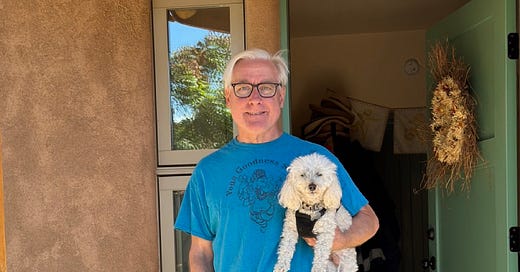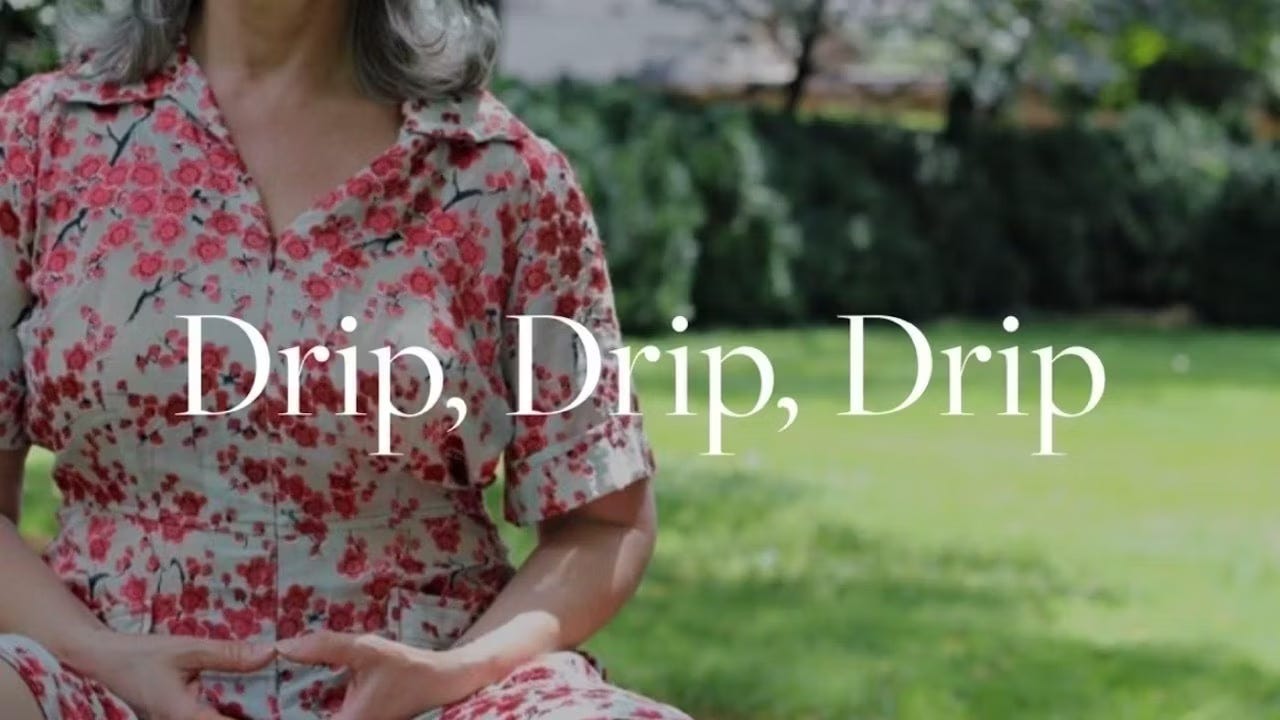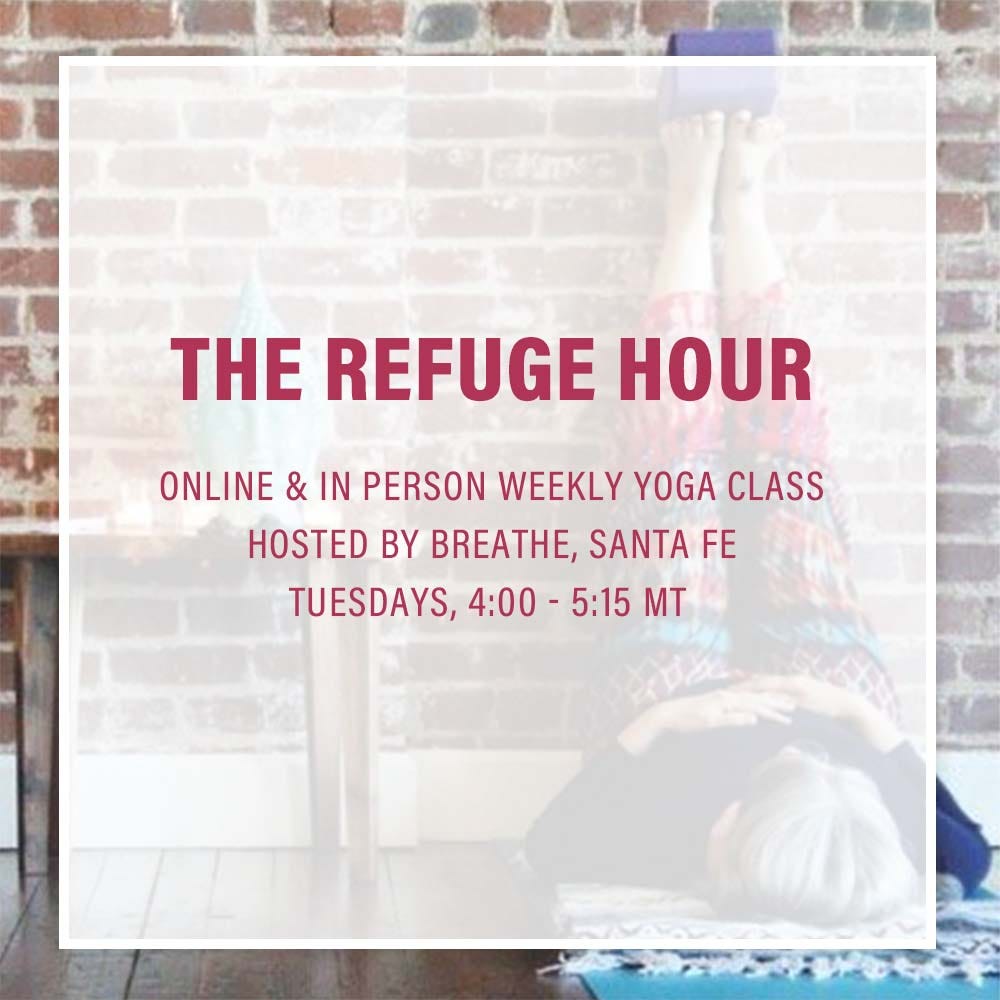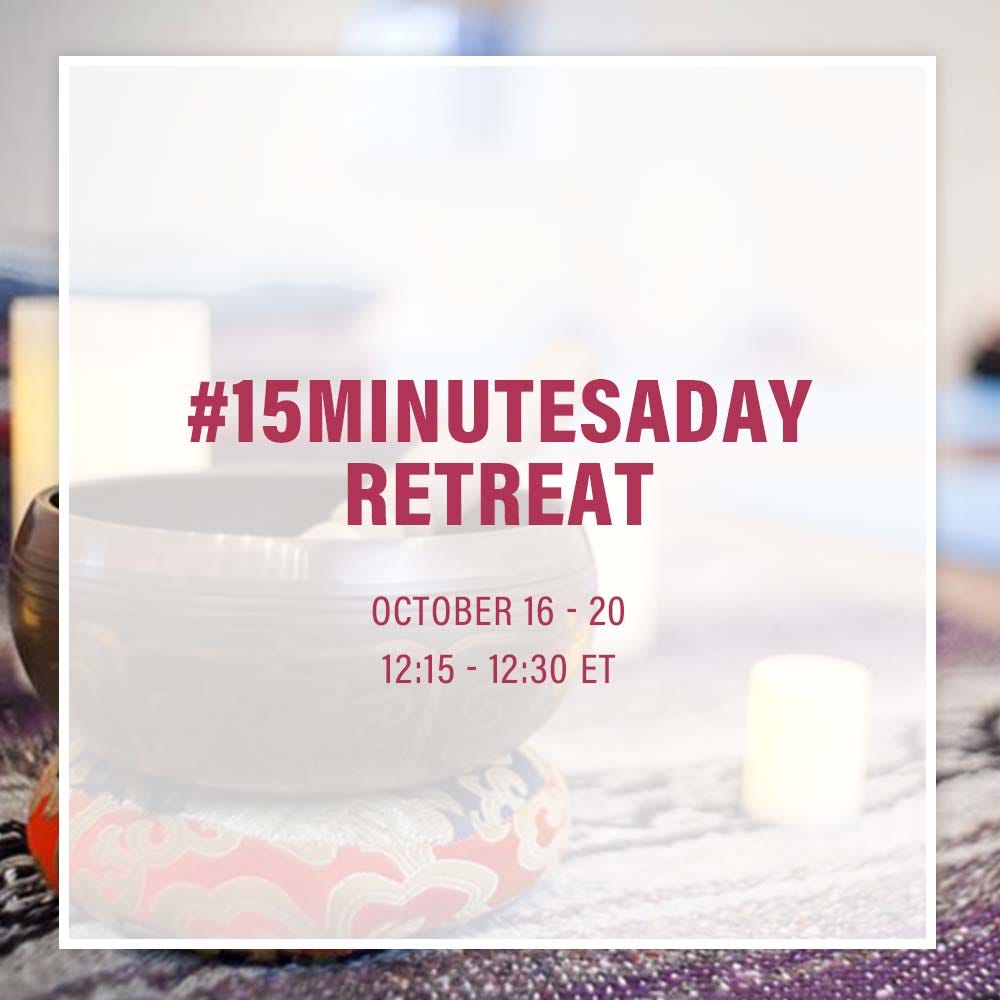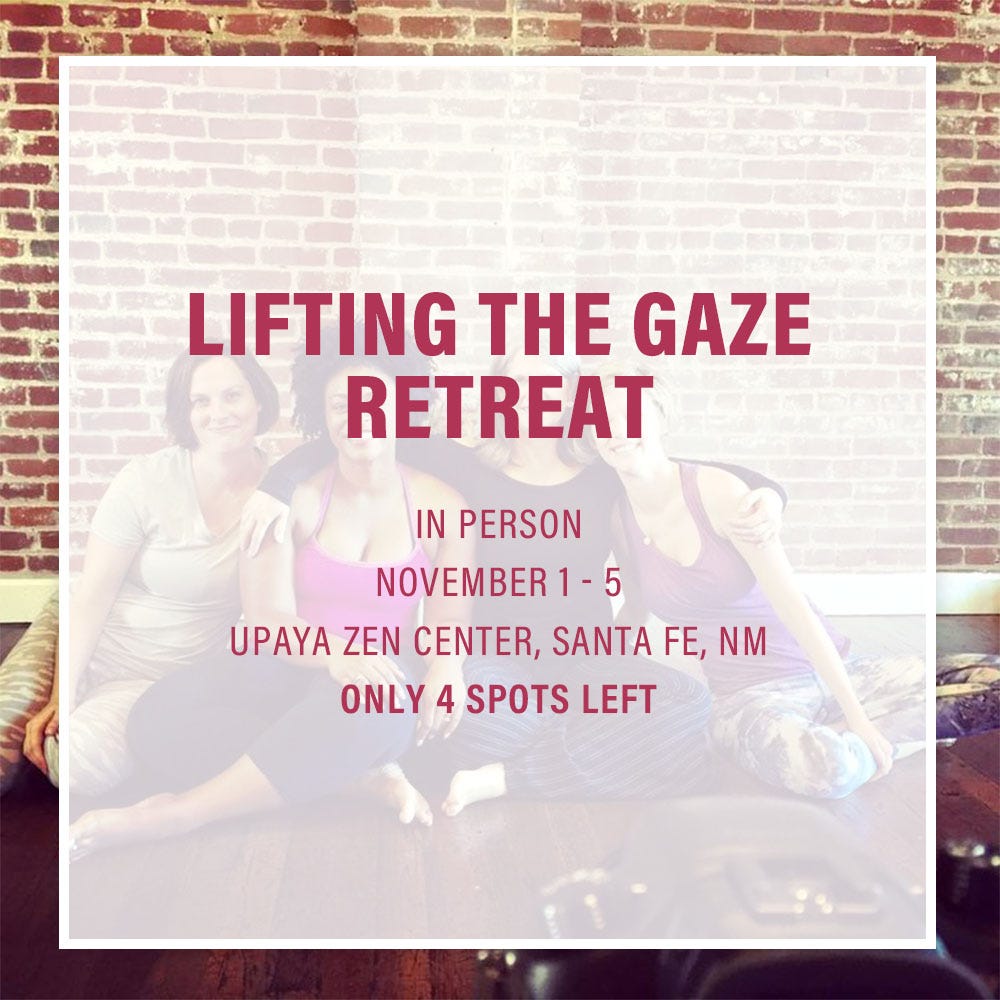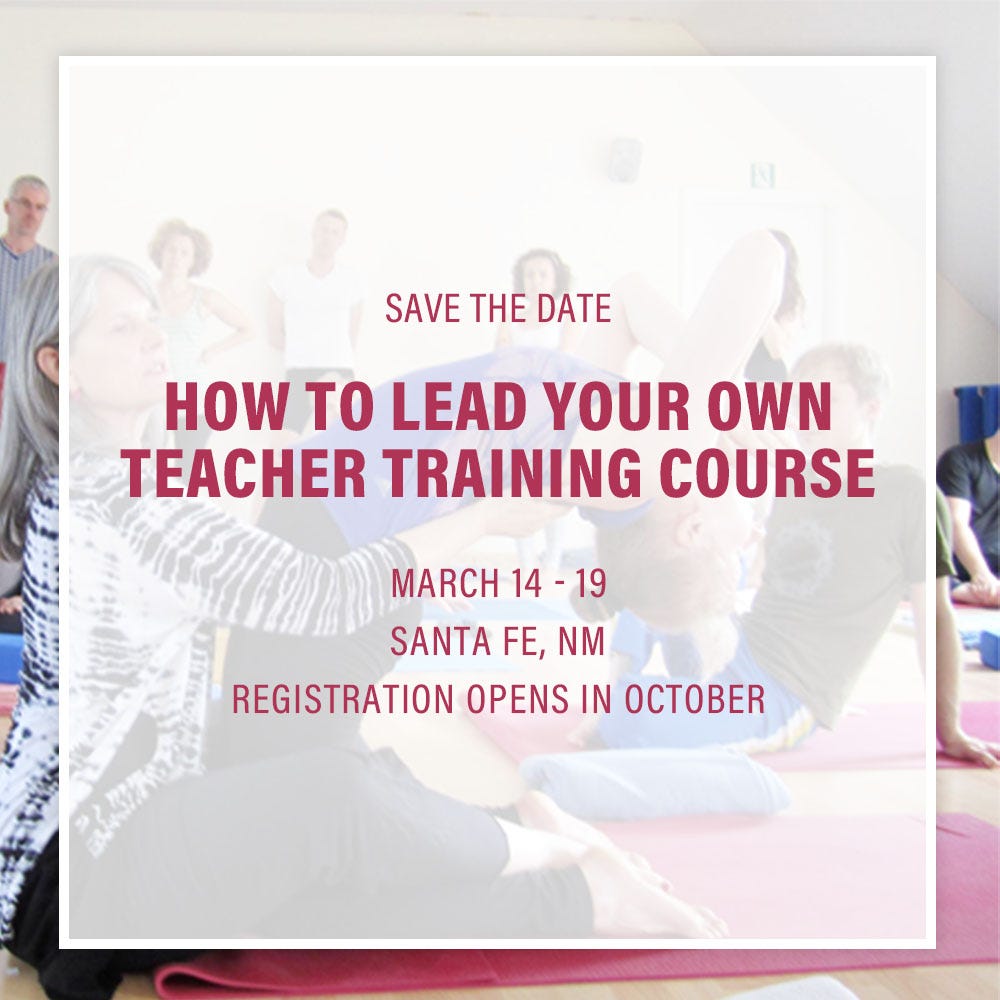Rivers and Dots of Awareness
Last week, for the first time in months, I got on my yoga mat.
My relationship with asana practice has evolved through numerous iterations since I had two hip replacements in 2018. The trauma of those surgeries imprinted my nervous system with fear of pain and for many years I remained cautious about doing yoga.
But over the past few months I’ve been a regular in dance class and have been working out with a personal trainer at the gym three times a week, and it suddenly occurred to me that I wasn’t afraid of yoga anymore. In fact, I missed it.
The other strong motivator for reigniting my yoga practice is that I am going to start teaching a weekly yoga class online and in person for the first time in a few years and I want to do a good job. There are two ways I know what to say in class. One is by looking at the students and the other is by feeling the work in my body.
So, I rolled up the rug and rolled out my yoga mat in a small room in our small house. The mat just fits between the wall and the filing cabinet. But it’s enough room and I can make it work. Time to make friends with my yoga body again!
What I didn’t expect is that it was no big deal.
All the physical connections were alive and well.
My tailbone and sternum were in conversation.
I pressed down to go up.
I lost my balance and then recovered it.
My drishti was clear.
It was as if I had never left the relationship.
Mingyur Rimpoche speaks about meditation as a river of awareness. It’s not so much about what happens in the practice. You might have a wildly creative fantasy or go off on an inner rant about how you were wronged ten years ago. None of this is what we are concerned within our practice. The point is that moment when we re-emerge and touch into the feeling of being back, of being present. The river of awareness was there all along.
Yoga is very helpful for this because it provides plenty of wake up calls. These are called Dots of Awareness and they are usually a sound, smell or physical sensation. Our mind can ebb out of the river of awareness but our body will always wake us up.
Paid subscribers also get:
Ask Me Anything & Just Three Things - a monthly deep dive into your questions, an audio or video practice and three recommendations for books, recipes, and sustainable living activities.
In my first practice this week, I had some moments of being fully engaged and some moments of spacing out. At one point, I did a seated forward bend, upavista konasana, and wow! My adductors, inner thighs are tight, tight, tight! That feeling was a major dot of awareness.
It was also no big deal. I guess after all these years of practicing and teaching meditation and yoga, I have started to take my own advice.
I didn’t judge.
I didn’t lecture myself on how I should have been practicing more all along.
I didn’t get frustrated.
I was just really curious.
I explored which leg was tighter and in which position, side bending or forward bending.
The tightness was not a problem. It was a dot of awareness which brought me back into full engagement with the river of awareness.
The transmission of Fresh Start is a meditation teaching, an encouragement that usually refers to the point in your mindfulness practice when you come to from spacing out. Instead of wishing your mind would never float off, the instruction is to simply rest your mind in that moment of openness. Then take a deep breath, refresh your posture and begin again.
Whether you lost your attention for 30 seconds, or you fell out of the habit of practicing for 5 years, it’s no big deal.
You can always come home again to the mat and cushion.
You can always step into that river of awareness.
You can always take a fresh start.
Drip, drip, drip, the bucket fills.
MEDITATION PROMPT FOR FRESH START
Walking meditation is an easy way to wake up and experience things in a fresh way. Here is how you do it.
1. Make a fist with your left hand, thumb inside. Wrap your right hand around it with your right thumb on top. This is the walking meditation mudra. Place this mudra just below your belly button.
2. Walk normally but just a little bit slower.
3. Place your attention on the sensation of each foot step.
4. When your mind strays, come back to the feeling of each foot step.
5. Keep your gaze at eye level. Try not to look around. You are keeping a close container even though you are walking through space.
I suggest that you take your walking meditation practice outside, if possible. Even if you are just walking around your own block — and keeping your gaze in front of you — you will still see things anew.
Spiritual refuge offers a path for connecting to the basic goodness of our own body, breath and mind. Cyndi will talk about what refuge means for yogis and how the practice of Sati or Mindfulness helps us develop a personal refuge that can support our daily lives.
Through meditation, sustainable yoga, pranayama, restorative yoga our practice will explore taking a different refuge: body, mind, breath, ground, space, yourself.
Every day for a week we will sit together for 15 minutes.
Sessions will begin with a short 5-minute-or-less talk and then we will sit together.
The talks will offer clarification on meditation technique, inspiration and motivation, and preparations for sitting such as grounding touch, body scan or breathing exercises.
Meditation and Knitting, Crocheting, Mending, Embroidering have so much in common and yet they are also completely distinct activities. You can be a meditator and not knit and you can be a knitter and not meditate. Or you can knit and meditate. What does it all mean?!
Meditating alone is how practice starts.
Connecting with each other is how practice lives.
Lifting the Gaze is a way of expanding our practice, letting in the sounds and sights of the world. It is also a way of expanding our scope of practice; knowing that when we see each other, when we practice together, we begin to create the world we want.
Attendance will be limited. There is already a waiting list for registering in October.
Please email me if you are interested.


